Nature in the City
Fifteen favorite finds while failing to find birds during spring migration in Atlanta
It has been more than two months since I’ve written a post about my garden or any local Atlanta nature. As I am still working on some longer pieces, this week I’m sharing photos of fifteen favorite things seen in the metro area this spring.
I recently purchased a flash and inexpensive pop-up diffuser for my camera to take better photos of springtails, but it has expanded my arthropod photography in general. The flash is my new toy. I cannot stop taking pictures of bugs.
[Click “play” to hear the toads and tree frogs that serenaded me while I took the below photos.]
Below is a red-banded leafhopper (Graphocephala coccinea) photographed at Murphey Candler Park on an evening where, serenaded by the sheep-like, nasal “maaaahhhhs” of narrow-mouthed toads, I failed to find a Connecticut warbler. Like their cousin the versute sharpshooter (G. versuta), these tiny insects stand out, despite their small size, due to the 90’s-Crayola-Neon-Crayon stripes on their wings and thorax. Both have started to appear around my garden, too, where they are welcome guests (despite their reputation as leaf-sucking, plant-disease-spreading pests.)
A couple of days later, I returned to Murphey Candler Park, arriving at the gravel and mud area five minutes after receiving a “Connecticut is back” alert on a rare bird group text. By five minutes, I missed the Connecticut warbler. I do not believe he has been spotted or heard in that spot again.
Instead, I saw this gigantic beetle, Eastern Eyed Click Beetle (Alaus oculatus), so named for the gigantic white-rimmed black circles — false eyes — on either side of the thorax.
I also saw some of the frogs I had only heard during my previous twilight visit to the park. The eyes of most frogs I photograph are golden, but this Cope’s gray tree frog (Hyla chrysoscelis) had eyes of silver set against a marbled gray and black body, somewhat resembling lichens on rock.
Nearly blending in with the mud were several small Southern leopard frogs (Lithobates sphenocephalus).
Away from the shaded edges of woodland and wetland, under hot sun, bright yellow coreopsis smiled up at the sky and hosted dozens of pollinating insects, including the sparkly, fuzzy Georgia mason bee (Osmia georgica). At the right angle, this bee’s sparkly black body turns sparkly blue.
Another insect brings black and blue sparkle to Atlanta’s parks, flitting around shaded woodland waterways on wings like shimmering shadow, each with a sparkle of white at their upper edge. I photographed this ebony jewelwing damselfly (Calopteryx maculata) on the South River Trail during a failed search for a Swainson’s warbler.
Others don’t stand out so much in the forest shadows, like this fuzzy, light-brown orbweaver spider who tried to masquerade as a bump on a stick.
However, the spider kept changing positions, which gave the game away. Above, the spider’s head is pointing towards the ground, eyes hidden. But then, as in the photo below, the spider turned and looked up.
“Oh, hello! Nothing to see here, just a stick, I swear!”
Speaking of spiders and mimicry, on a cloudy afternoon a week later, at Henderson Park, where I specifically went to take pictures of bugs (nope, definitely not looking for birds), I paused to admire a very shiny, copper-colored ant.
When I zoomed in on my photo, I realized this was no ant — too many legs and eyes. It’s an ant-mimic spider! (I believe this is Synemosyna formica, Slender ant-mimic jumping spider.) What I find especially fascinating about this mimicry is that the spider appears to have three body segments — an abdomen, thorax, and head, as an ant or any insect would — when it really only has two; spiders have an abdomen and, instead of a separate head and thorax, a combined cephalothorax.
Later, under a log, I found Euryurus maculatus, one Georgia’s 150 millipede species. Did you know that Georgia has the second highest millipede diversity in the country, second only to California? Many of our millipedes are boldly patterned in bright colors; I find the orange-red of this individual to be quite striking paired with the pale turquoise of the lichen.
Even while failing spectacularly to find “target” birds, I saw and appreciated plenty of birds this spring. A highlight of Murphey Candler Park (and what delayed me those five minutes during which I missed the Connecticut warbler) were the fluffy golden goslings trailing the adult Canada geese, who glared balefully at my camera and me.
Just look at that sweet face!
Equally sweet-faced — and sweet-songed, with a voice like a teeny tiny squeaky toy — is this brown-headed nuthatch seen poking in and around a dead tree at Kennesaw Mountain.
Click play to hear a brown-headed nuthatch recorded in 2020 at Panola Mountain State Park. (There’s also a blue gray gnatcatcher and airplane in this recording.)
During the failed attempt to chase a Swainson’s warbler, dozens (perhaps a hundred) cedar waxwings swept down from the sky to land in the mulberry trees next to the South River Trail.
Is there a collective noun for cedar waxwings? I think it should be a “blessing,” because blessed is how I felt as they swirled above and around me.
What’s Going on in the Garden?
The lizards have returned! Black and white pinstriped toothy skinks with iridescent blue-violet tails dart above and under the leaf litter. Little brown skinks hide in the shadows. Green anoles (which are sometimes brown) hang onto flower stems, gutters, and siding. Below, a green anole gives me some side eye in the front garden.
Pollinators have returned, too, such as the brown-belted bumblebee (Bombus griseocollis) gathering nectar from the Carolina golden banner (Thermopsis villosa).
Speaking of blessings, a monarch butterfly (Danaus plexippus) spent an afternoon in my yard visiting the coreopsis and milkweed before continuing the northward migration.
I hope you enjoyed this collection of springtime favorites. Next week, regular essays resume.

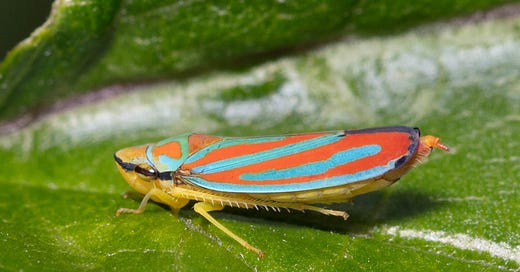




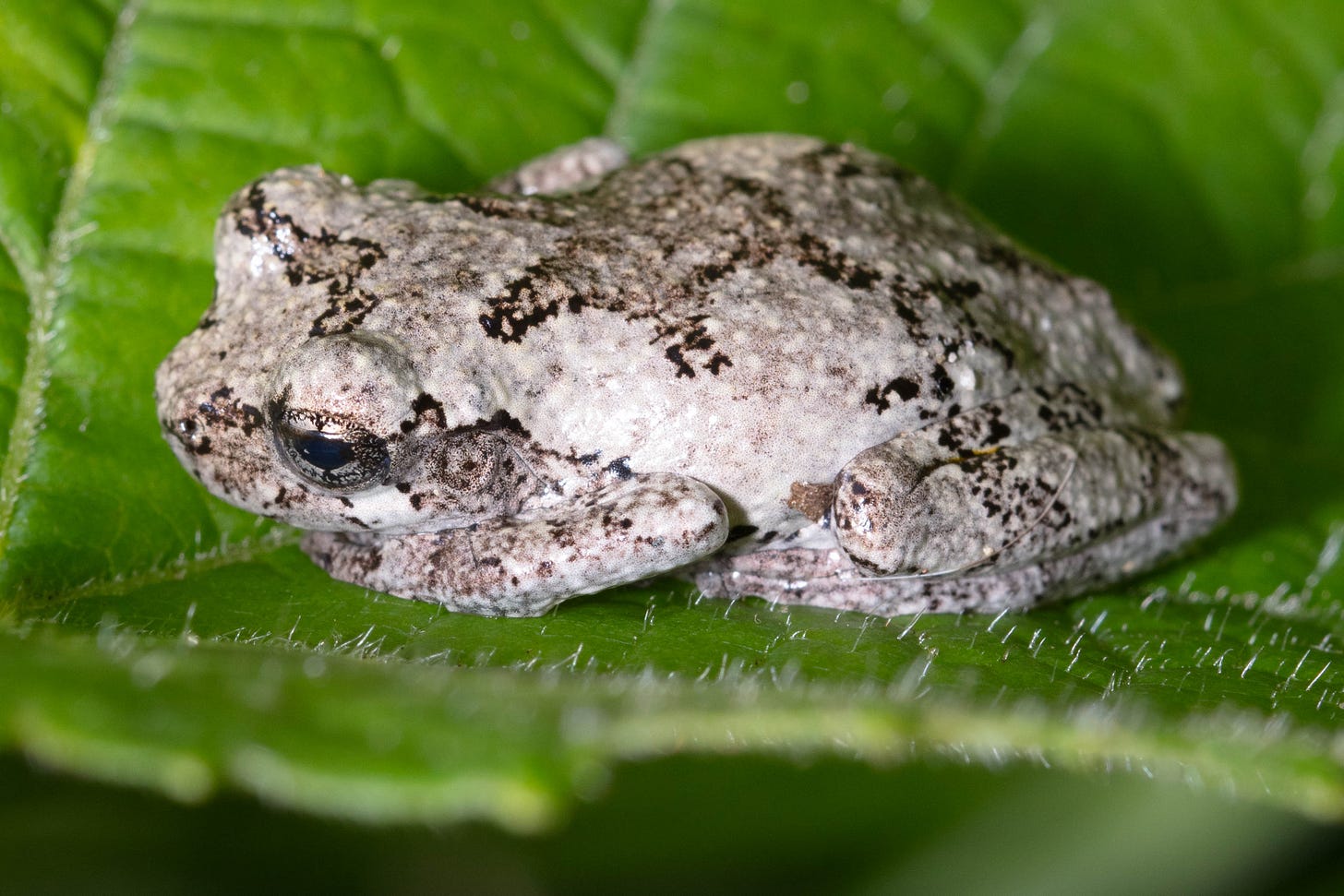
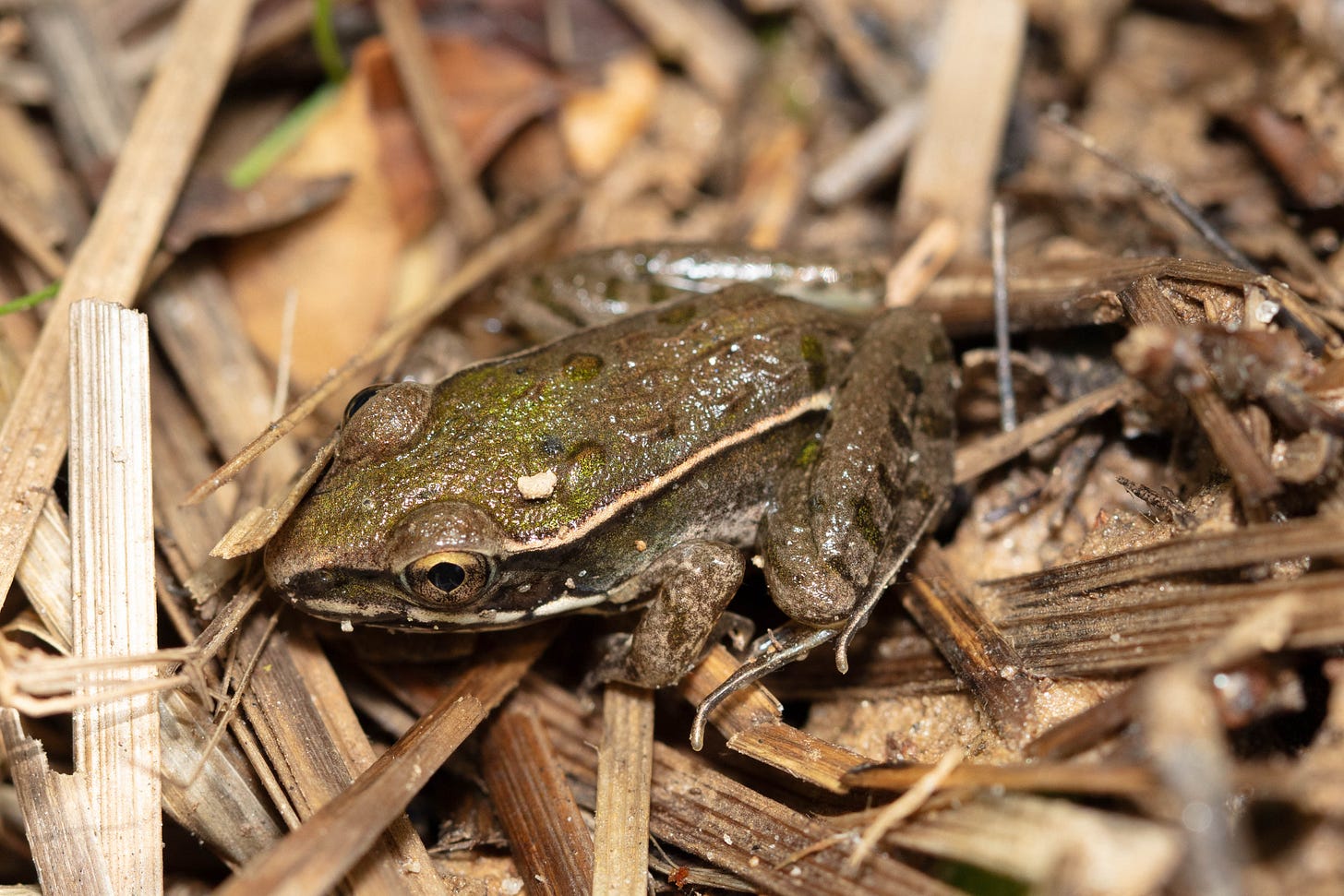

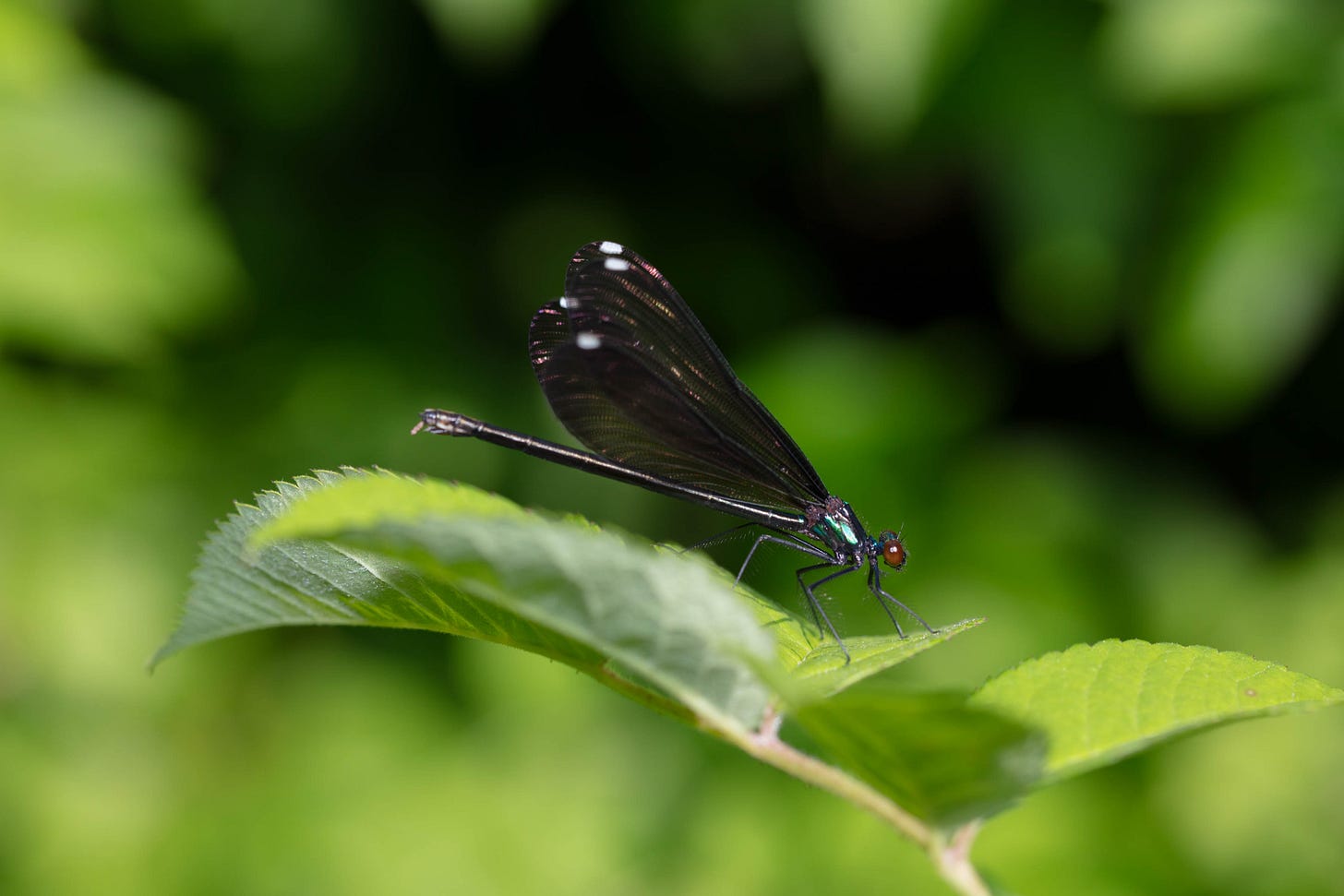
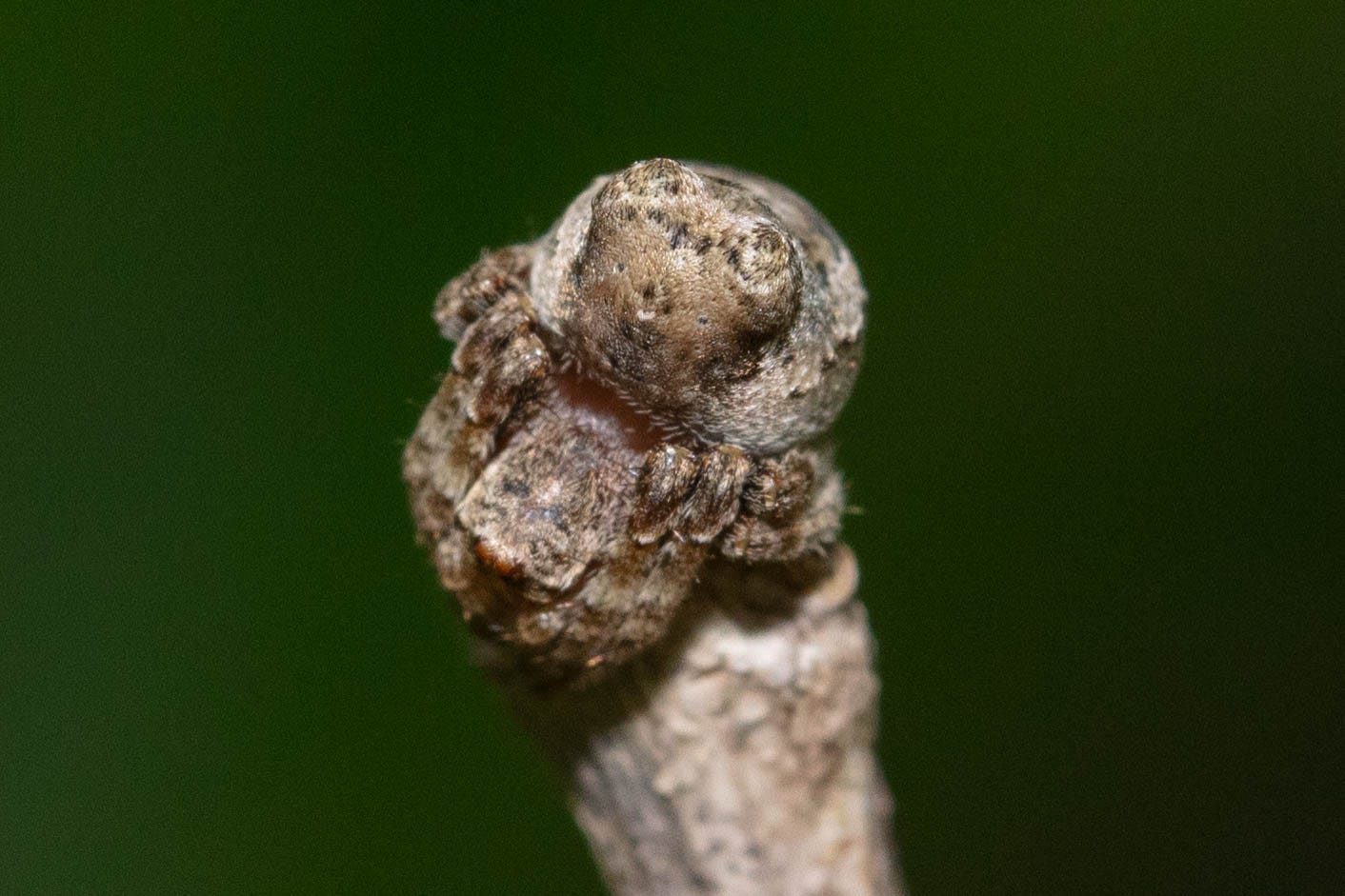
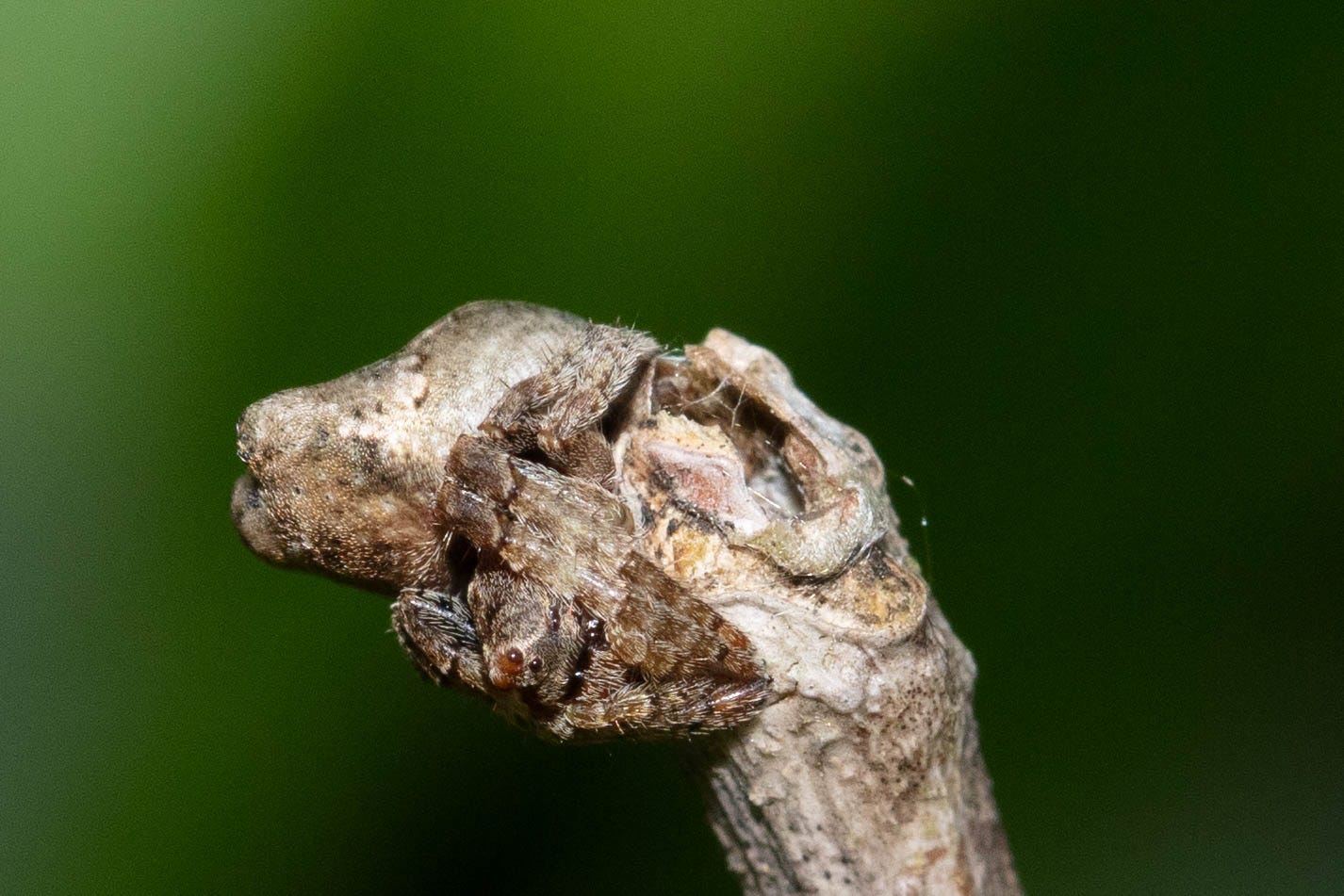

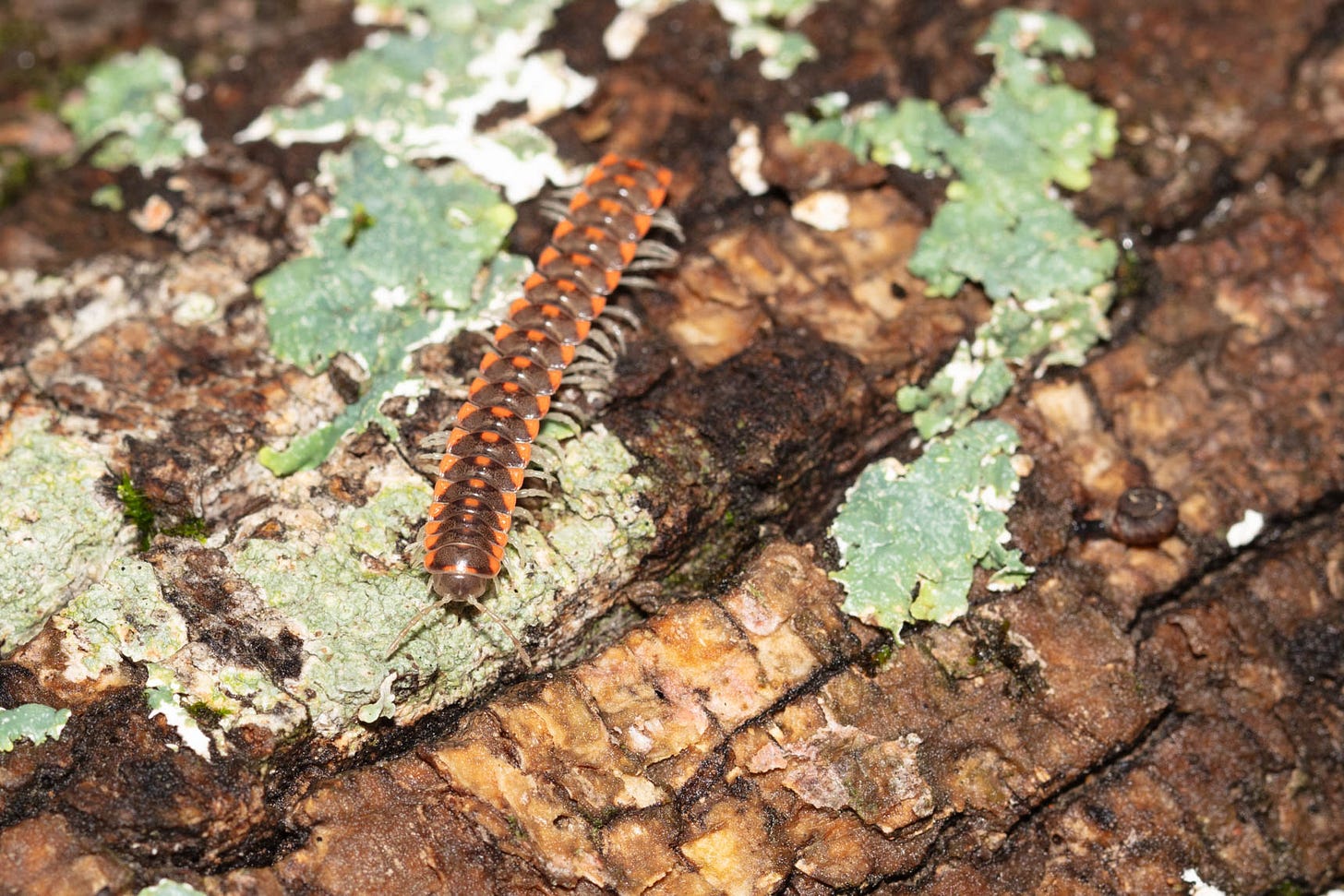

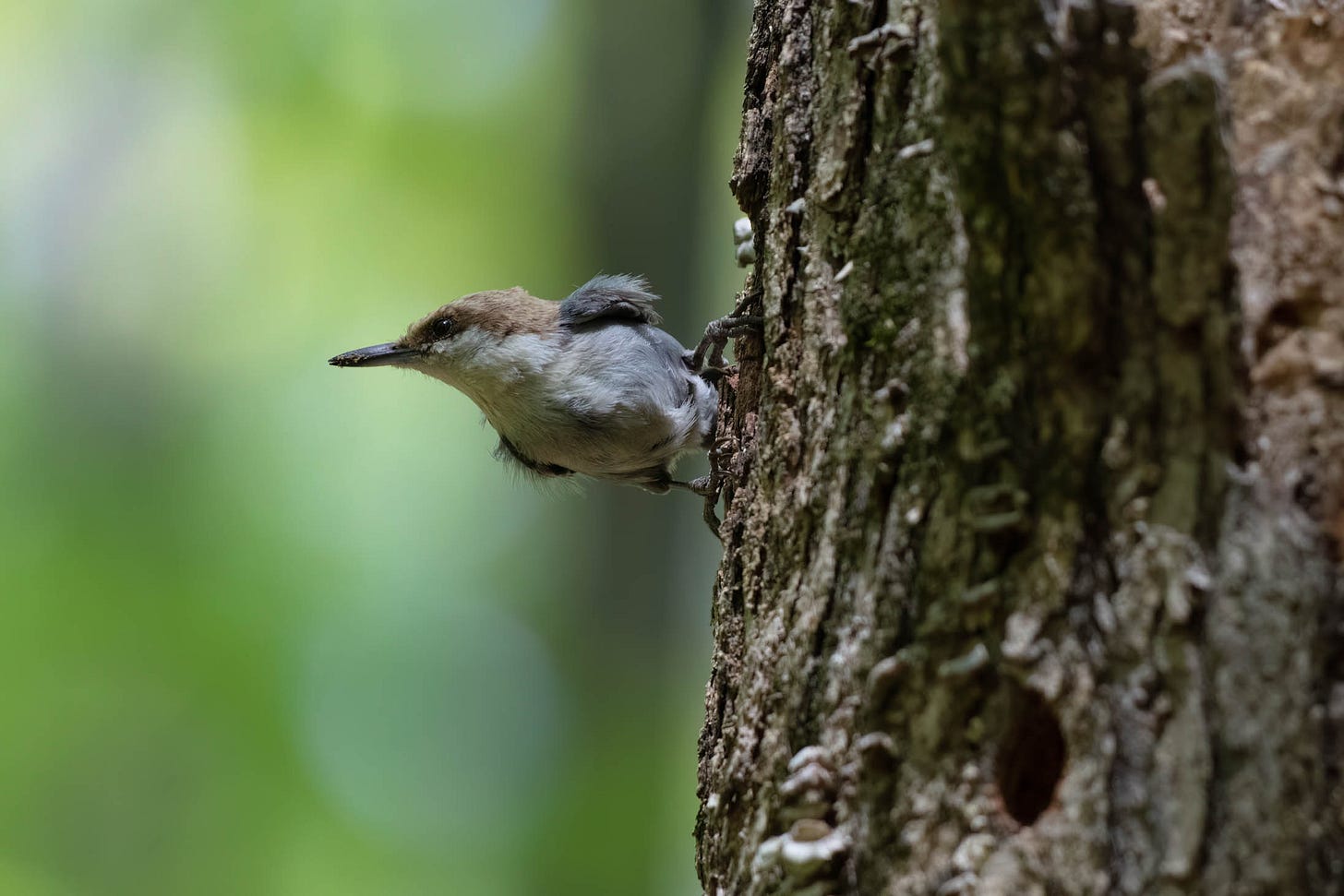

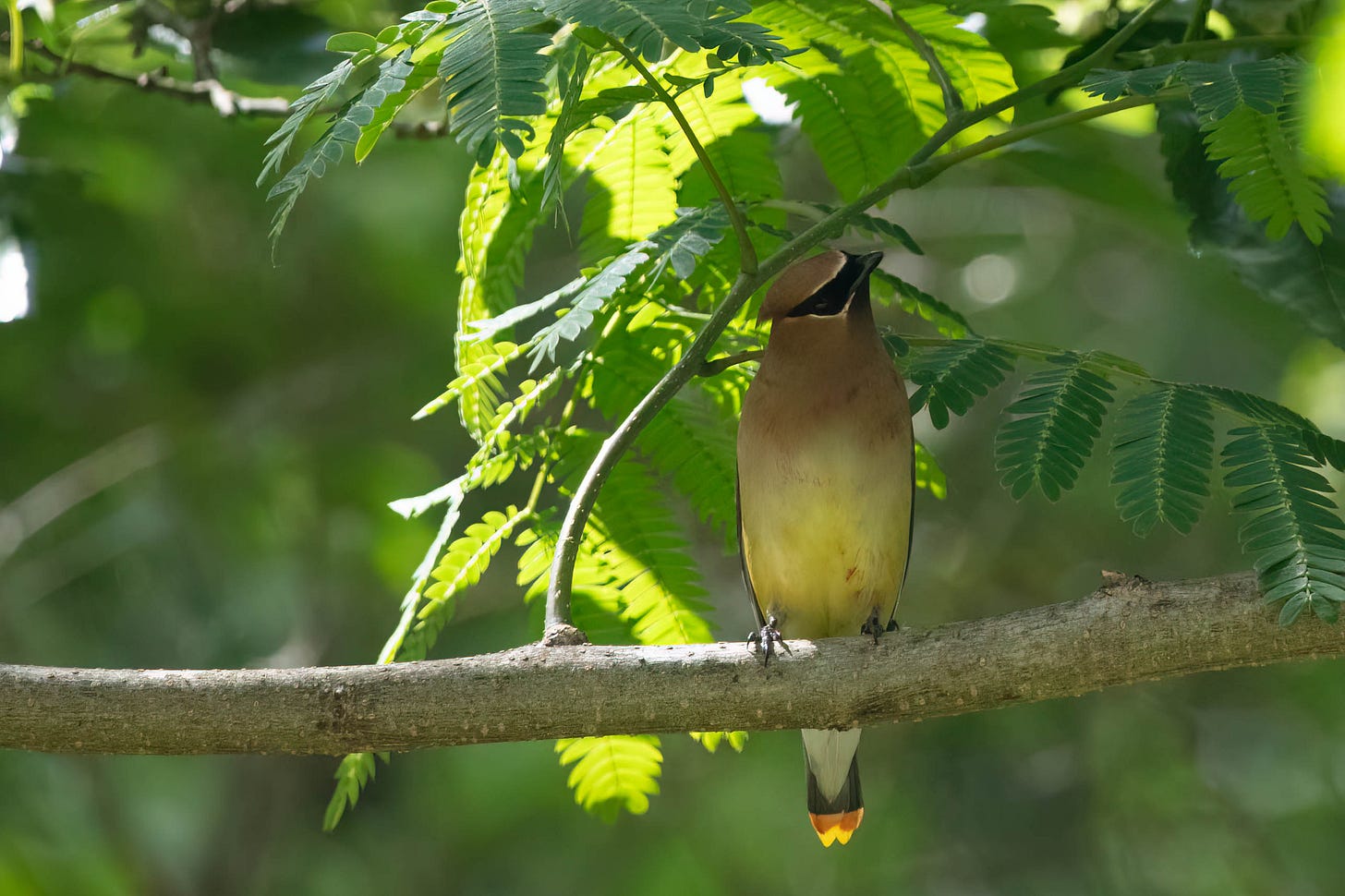
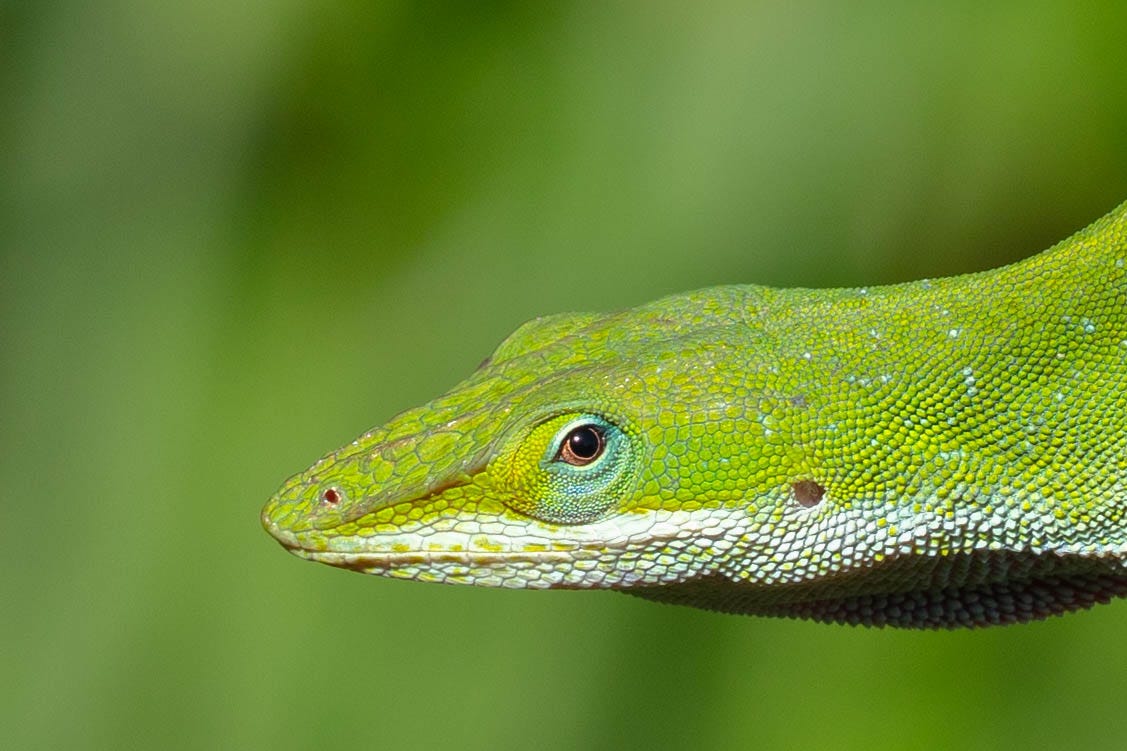
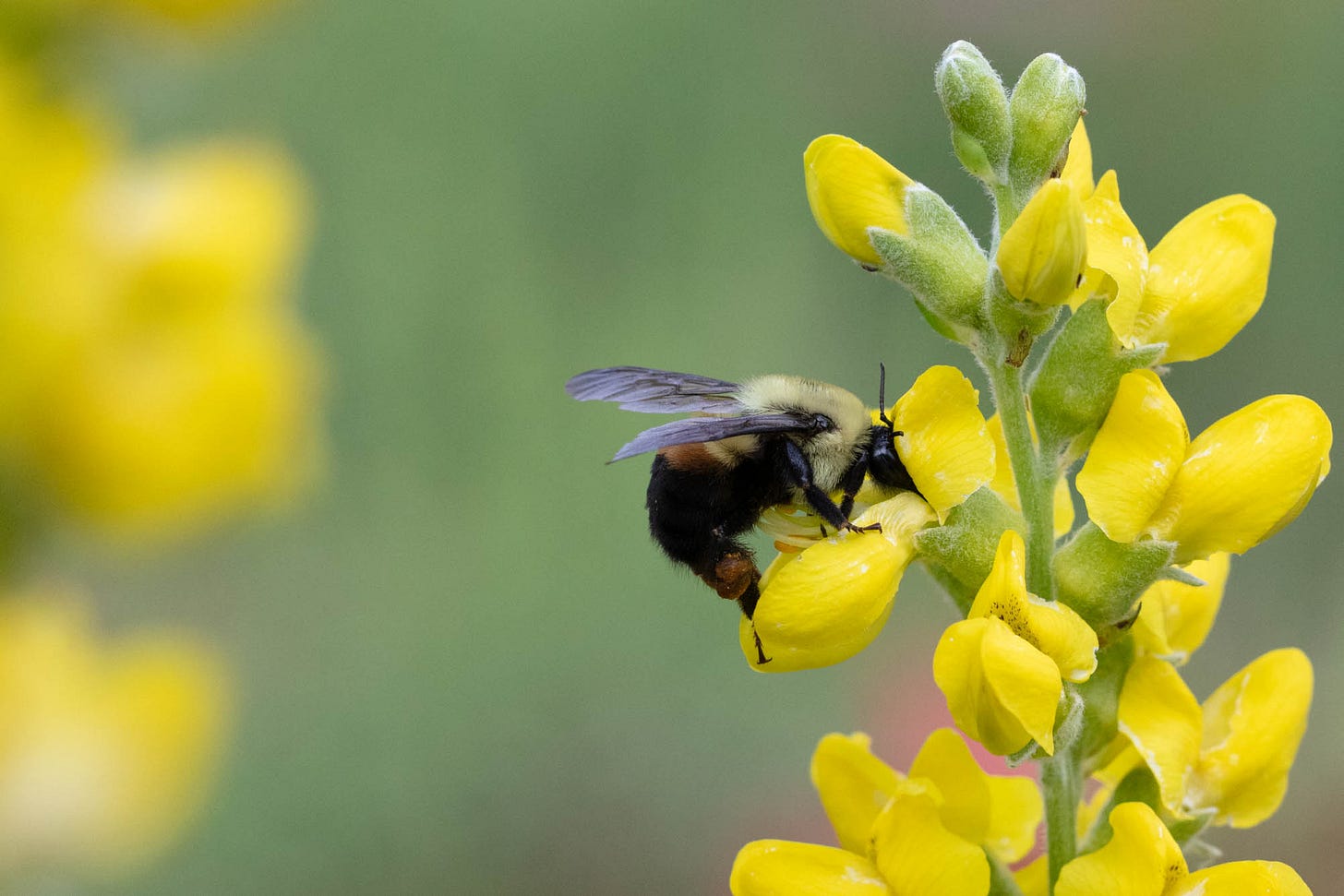
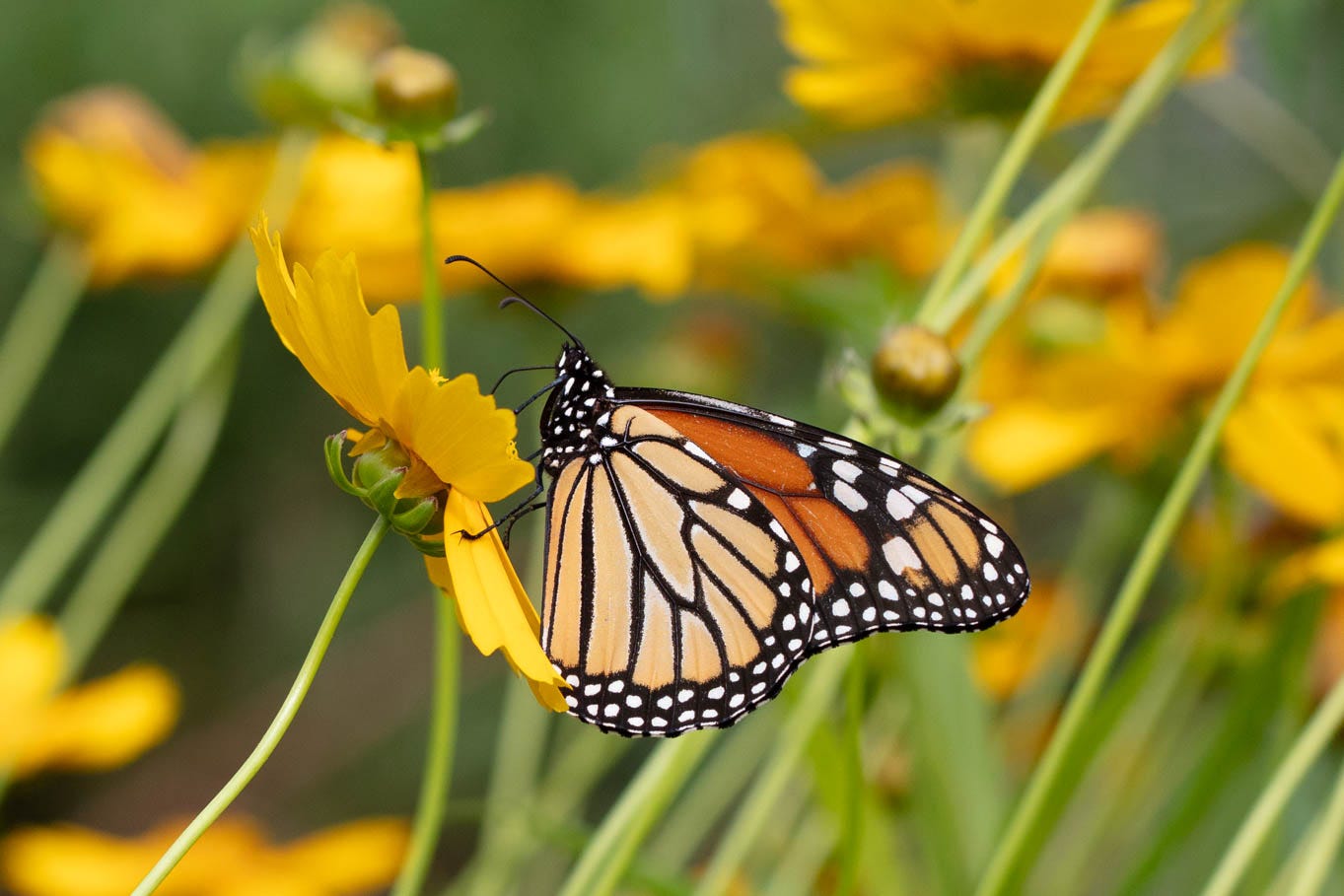
These photos are delightful! Every time you post it inspires me to look more closely at the little bugs (and other small creatures) that I typically overlook.
Sarah: You are a talented curator. I thoroughly enjoyed this and the fact that you failed to find birds during migration may have led to your success in spotting these magnificent creatures.